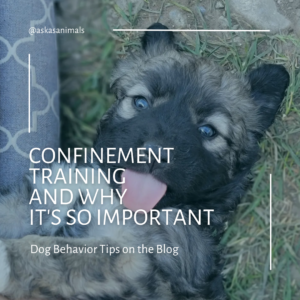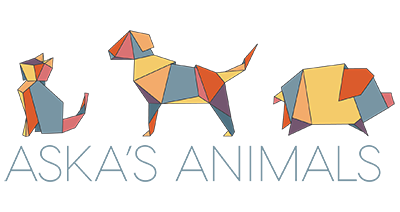Confinement Training (And Why It’s So Important!)

Confinement connotates isolation or punishment, but really, it’s the opposite. Confinement Training is teaching your dog that it’s safe and comfortable to be in a clean, cozy space by themselves for a short period of time. For example, Crate Training is Confinement Training. Confinement Training isn’t punishment for naughty behavior, it’s appropriate and healthy down time to prevent over-stimulation and stress. Confinement Training will reduce anxiety in your dog and make your life a whole lot easier. It’s a great tool to use if you’re cooking and need your dog out of the kitchen, you’re having friends over for a party, your dog jumps on house guests, your dog is struggling with potty training, your dog isn’t getting along with other animals in the house, you’re cleaning and your dog is afraid of the vacuum, etc.
The first step to Confinement Training is choosing a clean, safe, and cozy space for your dog. If you use a crate, continue to do so. If you don’t use a crate, choose a room in your house where your dog won’t cause damage to your belongings and where your dog won’t have accidental access to unsafe chemicals such as cleaning supplies. Perhaps the laundry room (with a window) or a bedroom. Next, set up the safe space with a comfy bed, a bowl of water, and a few toys. Then, guide your dog into the space with a peanut butter Kong or a bowl of food. Once the dog is eating the food or licking the Kong, close the door and listen for them to finish. After they finish the treat, wait one minute, then open the door and congratulate your dog with a high reward treat and verbal praise. Gradually, extend the time your dog spends in the safe space and tada! You’ve created a comfortable confinement space for your pet. You can now use this safe space when someone knocks on your front door, or you are anticipating guests. Before you answer the door or welcome people into your home, say, ‘just a minute,’ and guide your dog to their safe place.
Like with all training, set realistic expectations for your dog depending on his/her individual needs, breed, genetics, age, etc. Confinement Training and Management Training go hand in hand to prevent over-arousal that causes naughty behavior. If you want to learn more or have a specific Confinement Training question, check out Aska’s Animals Free Dog Behavior Workshops on the ‘Events’ Page or contact Krissi Goetz at JH Positive Training.



